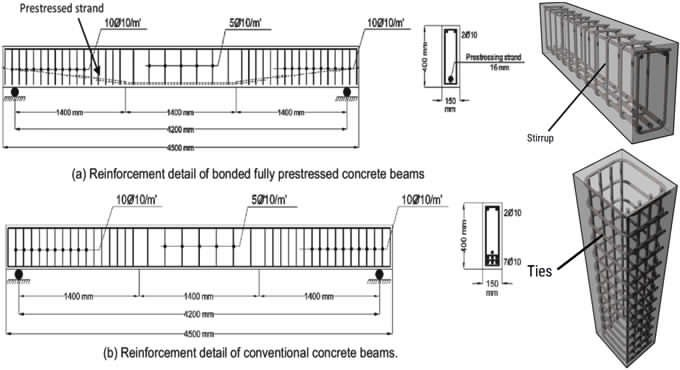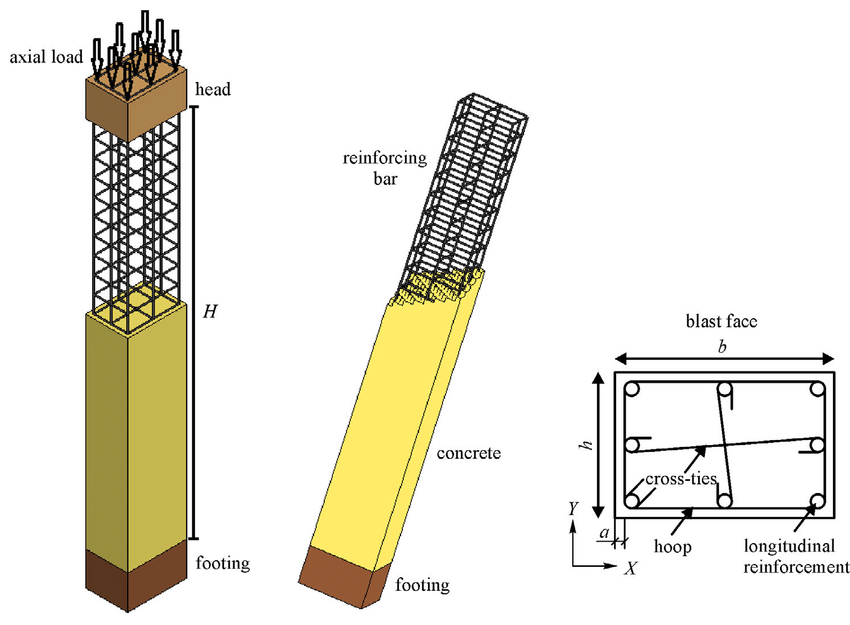Definition: Stirrups are closed loops of reinforcement bars used in reinforced concrete beams and columns. They are essential for ensuring the structural integrity of these elements by providing lateral support to the main longitudinal reinforcement bars.

Functions of Stirrups
- Shear Reinforcement: Stirrups prevent shear failure by resisting diagonal shear forces. They are placed perpendicular to the main reinforcement to intercept diagonal shear cracks.
- Confine Concrete: They help in confining the concrete, which enhances the strength and ductility of the structural element.
- Holding Main Rebars: Stirrups secure the position of main reinforcement bars, ensuring they remain in place during concrete pouring.
Types of Stirrups
- Closed Stirrup: Commonly used and provides continuous confinement around the main bars.
- Open Stirrup: Used in special situations, such as near beam ends where access is restricted.
- Helical Stirrup: Often used in columns to provide uniform confinement and enhance strength.
Placement and Spacing
- Spacing of Stirrups: Stirrups are placed at regular intervals along the length of the beam or column. The spacing is typically closer near the supports and wider in the middle section.
- Lapping of Stirrups: When the length of a single stirrup is insufficient, lapping is done to join two stirrups. The lap length should be sufficient to transfer forces between the bars.
Common Sizes and Shapes
- Bar Sizes: Stirrups are commonly made from smaller diameter bars such as 6mm, 8mm, or 10mm.
- Shapes: Stirrups can be rectangular, square, circular, or even custom-shaped to fit the design requirements.
Importance of Proper Stirrups
- Structural Integrity: Improper placement or inadequate stirrups can lead to structural failures, such as shear cracks or collapse.
- Code Compliance: Construction codes and standards (like ACI, IS, Eurocode) provide guidelines for the design and placement of stirrups, ensuring safety and durability.
Practical Tips for Site Engineers
- Regular Inspections: Ensure that stirrups are correctly placed and securely tied before pouring concrete.
- Detailed Drawings: Follow the structural drawings and specifications meticulously to avoid errors.
- Quality Materials: Use high-quality steel for stirrups to ensure they perform their intended functions effectively.
By understanding and implementing these stirrup details, a Site Engineer can significantly contribute to the safety and strength of a construction project.

Here are some reference books that provide detailed information on stirrups and their use in reinforced concrete:
- “Structural Concrete: Theory and Design” by M. Nadim Hassoun and Akthem Al-Manaseer – This book covers the design and structural analysis of concrete, including transverse reinforcement and shear in wide beams. It’s a comprehensive resource for both students and professionals.
- “Structural Engineering Reference Manual” by Alan Williams – This manual is a great reference for structural engineers, covering a wide range of topics including the design and placement of stirrups.
- “Steel Design” by William T. Segui – This book focuses on the design of steel structures and includes information on the use of stirrups in reinforced concrete.
- “Structural Members and Frames” by Theodore V. Galambos – This book provides a detailed study of the behavior of metal beams, pillars, and columns, including the use of stirrups for reinforcement.
These books should provide you with a solid understanding of stirrups and their application in structural engineering.

